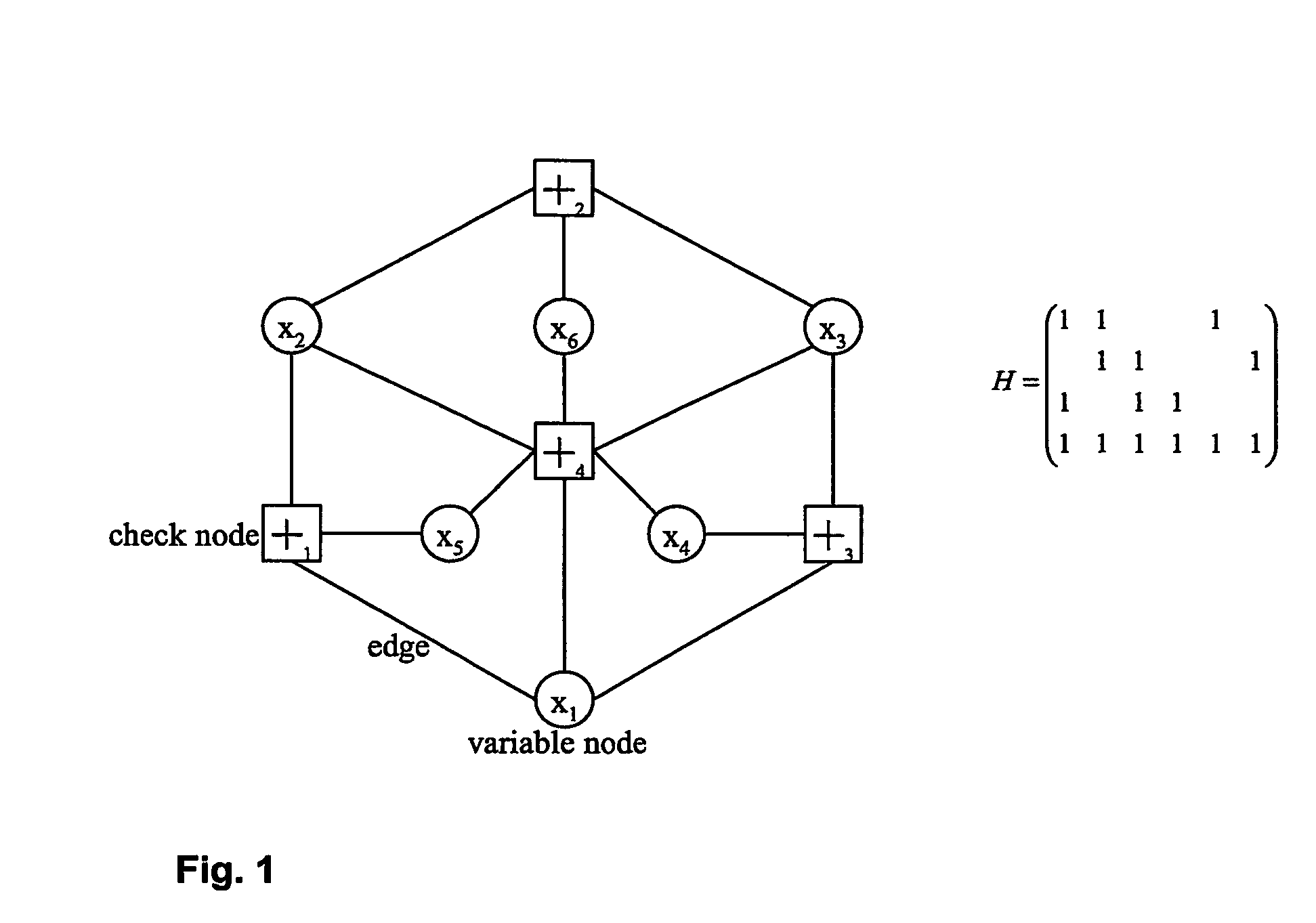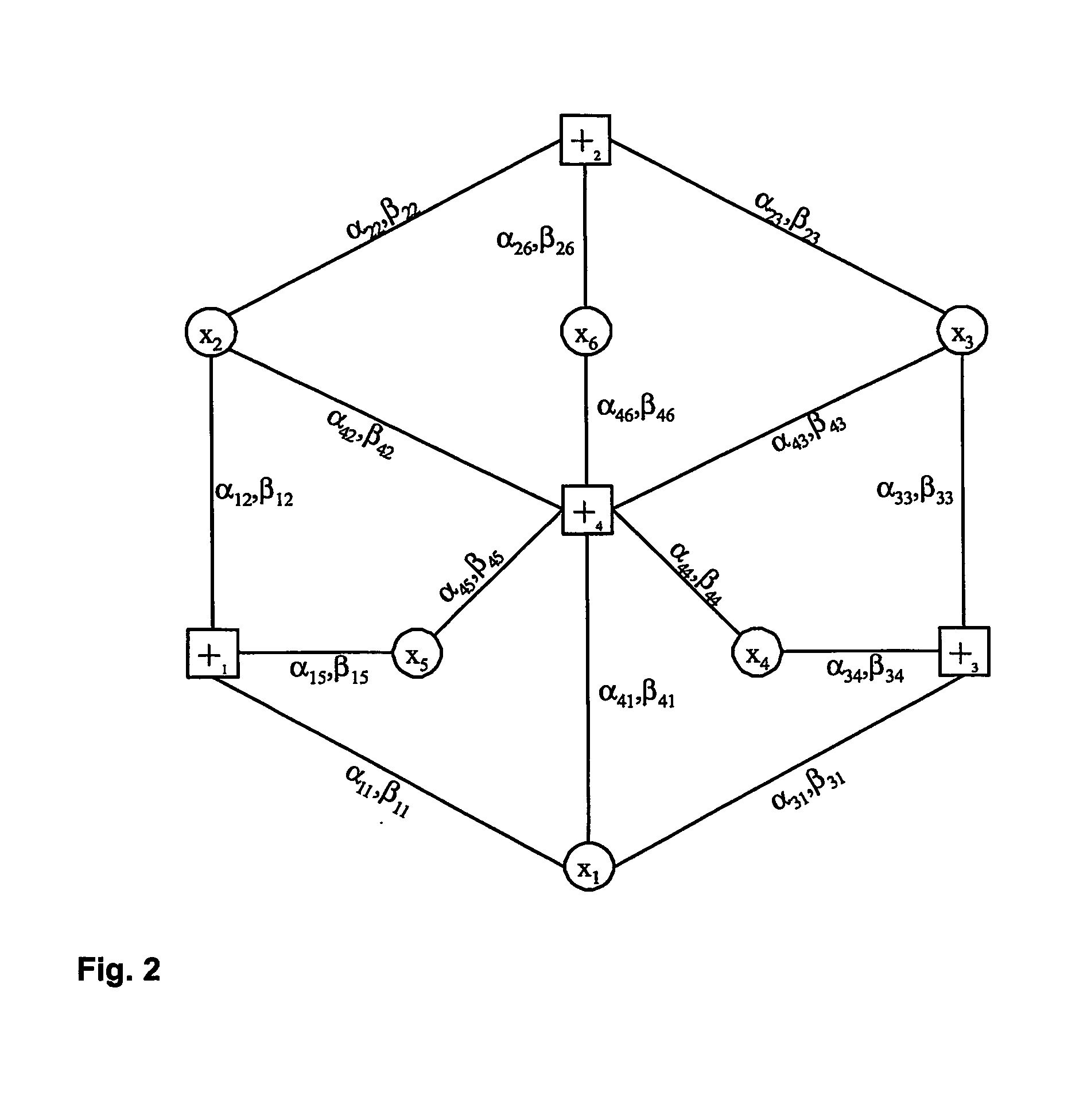Belief propagation decoder cancelling the exchange of unreliable messages
a technology of belief propagation and decoding, applied in the direction of coding, instruments, code conversion, etc., can solve the problems of reducing the performance of decoding, reducing the influence of wrong information, and generating inaccurate probabilities.
- Summary
- Abstract
- Description
- Claims
- Application Information
AI Technical Summary
Benefits of technology
Problems solved by technology
Method used
Image
Examples
Embodiment Construction
[0071] In the following description of the different embodiments of the present invention the expression “x∈A\B” denotes “x is element of set A without set B”, which is equivalent to “x is element of set A but not element of set B”. Further, the following paragraphs will outline the ideas underlying the present invention by way of example considering LDPC decoding. However, it should be noted that the principles underlying the present invention may also be applicable to other codes.
[0072] As outlined before, mathematical equations may be solved in the horizontal step, vertical step, and decision step. At least the horizontal step and vertical step equations are computed in each iteration, such that it would be formally correct to refer to e.g. αmn(i) and βmn(i), where i represents the iteration number, and the initialization step for αmn may be interpreted as iteration number zero, i.e. αmn(0). However for sake of simplicity and brevity an iteration superscript has been omitted fro...
PUM
 Login to View More
Login to View More Abstract
Description
Claims
Application Information
 Login to View More
Login to View More - R&D
- Intellectual Property
- Life Sciences
- Materials
- Tech Scout
- Unparalleled Data Quality
- Higher Quality Content
- 60% Fewer Hallucinations
Browse by: Latest US Patents, China's latest patents, Technical Efficacy Thesaurus, Application Domain, Technology Topic, Popular Technical Reports.
© 2025 PatSnap. All rights reserved.Legal|Privacy policy|Modern Slavery Act Transparency Statement|Sitemap|About US| Contact US: help@patsnap.com



